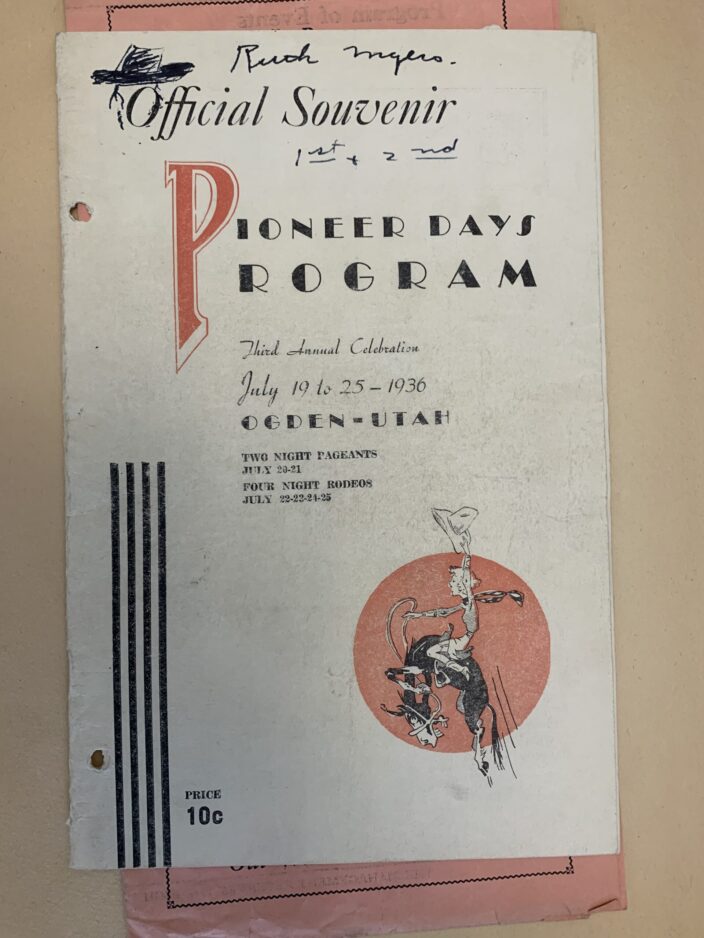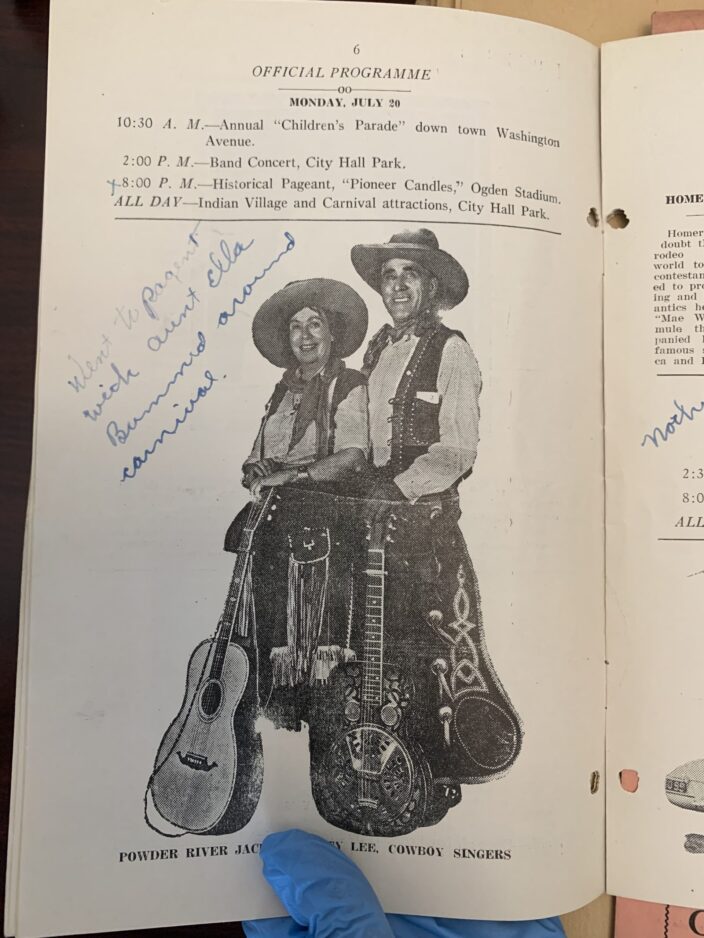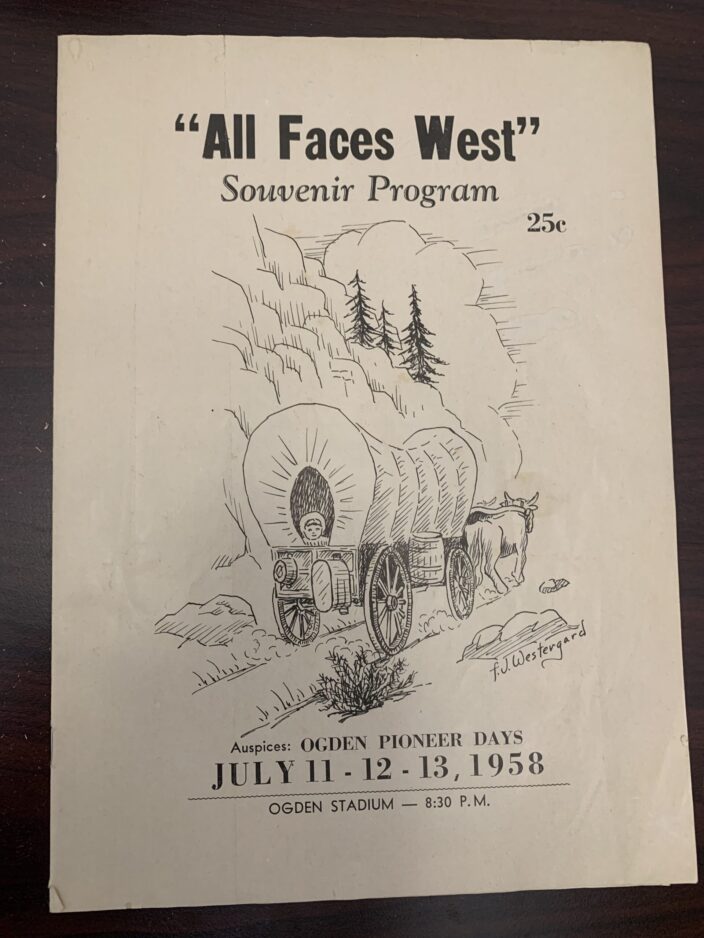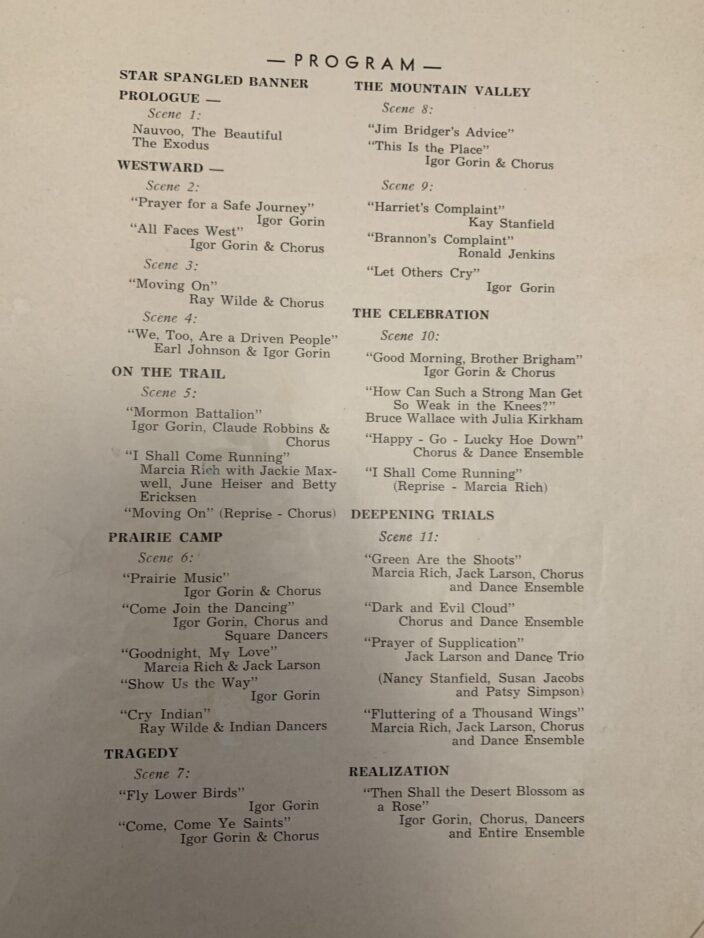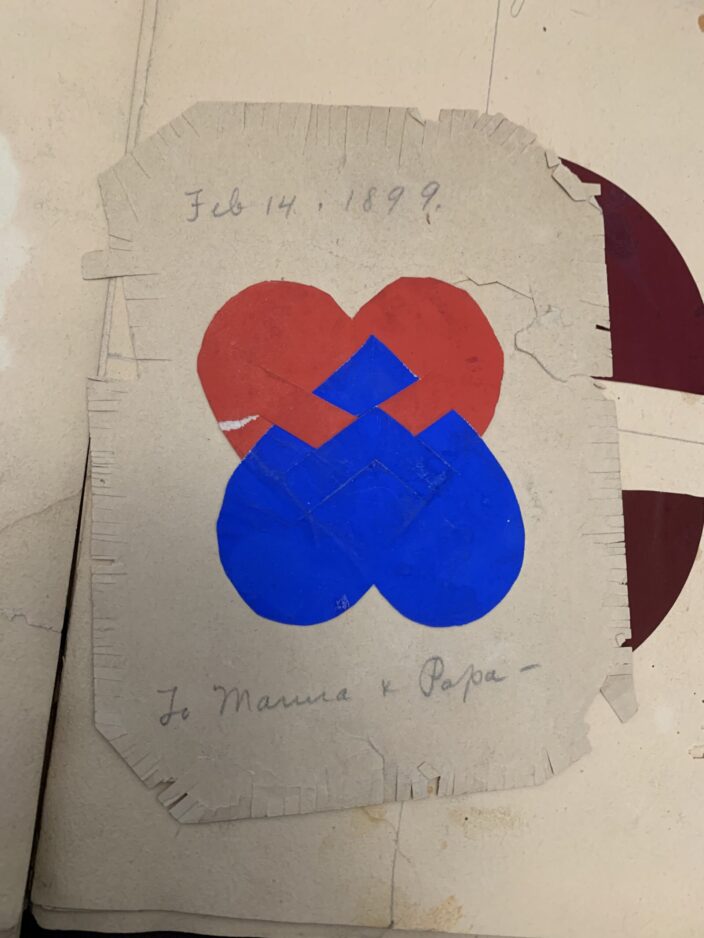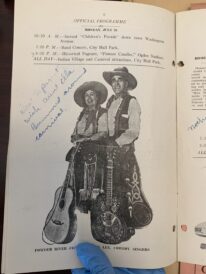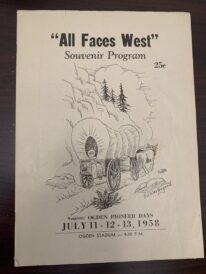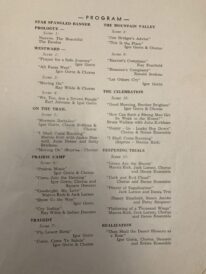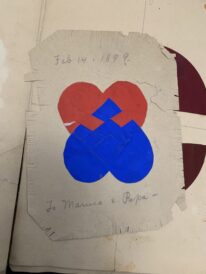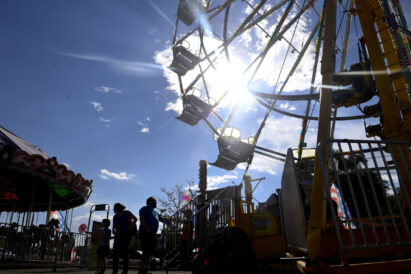Into the back rooms: Museums at Union Station open up collection with reminders of Ogden Pioneer Days past
- A souvenir program from the 1936 celebration of Ogden Pioneer Days. The program is part of the Myers-Shrider Collection at the Museums at Union Station.
- A souvenir program from the 1936 celebration of Ogden Pioneer Days. The program is part of the Myers-Shrider Collection at the Museums at Union Station. Ruth Myers herself noted throughout the program which events she partook in.
- A program for the 1958 Ogden Pioneer Days performance of “All Faces West” from the Myers-Shrider Collection at the Museums at Union Station.
- A song list from the 1958 performance of “All Faces West.”
- A 19th century Valentine’s Day card from the Myers-Shrider Collection at the Museums at Union Station.
Editor’s Note: This is the first installment in a planned series highlighting some of the the off-display artifacts at museums from across the region, how those items are dealt with and their importance to telling a piece of history, whether or not they’re readily visible to the public.
OGDEN — Museums have been a staple of the human experience for centuries.
On their best days, they’ve been used to educate the public about cultures near and far, celebrate heritage and try to bring a little sliver of the past to life for those living in the present. On their worst days, they’ve been used by empires to display trophies of plunder and exploitation, served as public relations to smooth over the edges of past and present injustices and been caught up in the attempts of politicians to erase groups of people they deem “unworthy” from the human experience.
But one thing is true of nearly all museums — they are a curated experience where the public will only get to see a fraction of their collection. Be it due to space, restoration status, lack of interpretation opportunities, incomplete information, artifact condition or even a combination of these factors, most museums have the breadth of their collections stored in back rooms and other off-site storage options.
In 2019, Bates College noted that even world-famous museums such as the Louvre and the Guggenheim display less than 10% of their total collections to the public due to a lack of space.
The same is true of museums along the Wasatch Front. In this series, we’ll explore the unique challenges of curating these large collections for the public along with highlighting some of those items the public has yet to see — and if those artifacts may yet see the light of day.
And at the Museums at Union Station in Ogden — home to the Utah State Railroad Museum, the Browning Firearms Museum, the Browning-Kimball Car Museum and the Utah State Cowboy and Western Heritage Museum — Museum Administrator Hope Eggett told the Standard-Examiner that much of the collection remains off display, though available, as a means of preservation and education.
“Museums, their overarching goal, is to provide educational opportunities and meaningful interactions,” she said. “That can include the exhibits we have front-of-house, but it also includes materials that we have back-of-house that are available for more deep researchers or that are available for historians to be able to study and analyze for generations to come. In order to keep them safe from the agents of deterioration like light and traffic and the wear-and-tear of handling, we do keep a good portion of our collection off of display so we can pull them out more sporadically and keep them safe for generations to come. In addition, that gives us the space to provide additional interpretation and give people more of an idea of the context behind what they’re looking at.”
She said that most museums see around 90% of their collections off-display at any one time with history museums placing upwards of of 97%-98% in storage.
“People are usually shocked to hear that, but that means that there’s all of this material that’s going to be available for future generations that can be used for future exhibitions and be able to provide a little bit more context for researchers as well,” she said.
Eggett noted that the Museums at Union Station allows the public to make appointments to view back-room items along with research requests.
She added that technology is also opening more of these artifacts to the public.
“The future of museums is going to be leaning more and more digital,” she said. “Of course, we still want ot have hands-on experiences with the artifacts, and there’s certain aspects you lose in the digital world, but being able to expand our access to the information about the collections, the meta-data and information that’s cataloged about the items is only going to improve access to how researchers learn about the past and learn more about their subject that they’re trying to find out about.”
Among the many collections in the back rooms at the Museums at Union Station are eight boxes labeled the Myers-Shrider Collection — collected over the years by Ruth Myers and her husband Daniel Shrider. Myers especially made a point to collect things from her everyday life growing up in the early 20th century from Valentine’s Day cards to report cards.
This also included memorabilia linked to Ogden Pioneer Days.
The artifact: An official 1936 Ogden Pioneer Days souvenir program.
Description: A program detailing the events of the 1936 Ogden Pioneer Days festivities. On the front, a young Myers doodled a cowboy hat and took notes throughout the program detailing the events she attended, including one that reads “Went to pageant with Aunt Ella.”
Will it ever be on public display?: Potentially.
The artifact: A souvenir program from the 1958 Ogden Pioneer Days production of the musical adaptation of “All Faces West.”
Description: In 1951, Ogden City and officials from The Church of Jesus Christ of Latter-day Saints commissioned Roland and Helen Parry to compose a musical drama to celebrate Pioneer Day. The result was “All Faces West,” which featured Ukraine-born opera singer Igor Gorin . The show was presented during Ogden Pioneer Days for several years. The 1958 program includes short biographies of the Parrys and Gorin along with a cast list, advertisements and a list of songs. Selections of the music can be found on YouTube to this day.
The artifact: A 19th Century Valentine’s Day card.
Description: A handmade Valentine’s Day card, dated Feb. 14, 1899, and reading “To Mamma + Papa”
Will it ever be on public display?: Potentially.
Eggett said the lack of context to present multiple items in the museums’ collections and the degraded condition of many of the items in the Myers-Shrider Collection have kept it in the back rooms.
However, she said that doesn’t degrade their importance to telling Ogden’s story.
“These are full of people’s names and activities that really provide a snapshot of what the city was like at the time,” she said. “This is really helpful for connecting their families in the past as well as showing the priorities of our city over time. … For a long time, historians were just focused on the rich people, the big players, who was funding these programs. Having this history really provides a different look at the past and how everyday people really just made this happen.”
Eggett said there’s even the possibility that, as the Museums at Union Station evolve and expand in coming years, some of the Myers-Shrider Collection may make it into the public eye.
“We are really excited with the space that we have now,” she said. “We have a little bit of space to do traveling exhibits, but one of the hopes that we have for a potential future museum would be having spaces to curate specialty exhibits like this in the future a little bit more. Having the space to safely display these items would be really helpful and it gives us the tools we need to research the past, come up with the history and interpretation side of things and then actually display these remnants.”
She said the Museums at Union Station are always looking out for items related to Ogden’s history and that anyone interested in donating or seeing parts of the collection are free to o contact the museum to set up an appointment.

